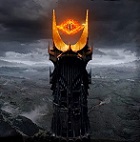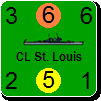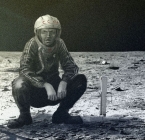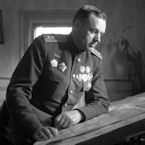Stoat
Posts: 37
Joined: 9/20/2011
From: Toronto, Canada
Status: offline

|
Pelton mein General, there y'are, was wondering when you'd turn up. Say, what is that dense pattern of rifle butt-shaped bruises all over your head, neck, &, wait... well, pretty much all over most o' the rest of you too, I'd guess. Figured you'd be in traction. Schön schön, you have a high pain tolerance, then - that is an outstanding or perhaps rather a necessary characteristic for a competitive Axis GGWitE player! 
Lol @ the O/T emoticon, & you may have created a monster as I have just figured out where to find these (the "more smileys.." link of course). Laissez les bon temps roulez, or as they say in this neck o' th' woods down KW way at just this time of year, "O'Zapft is!": http://www.youtube.com/watch?v=oxcRKkuZeLA
Happy O-Fest to all btw!  Oh yeah that's right, I "more smileys.."'d the heck out of it! Oh yeah that's right, I "more smileys.."'d the heck out of it! 
On the discussion, k fine, you & FlaviusX are both right to focus on factory evac since it is one of the two uses of rail cap. Also well done on raising the important issues of "what percentage of industry did the USSR actually evacuate" and perhaps the inverse, "how much industry did the Axis forces destroy"? Key questions, because they are focused, relevant and quantifiable. Also easily actionable, because if we should form the view that if the fac evacs observed in a good-sized sample of games do not on balance correspond to our understanding of historical reality, then it is only rail cap and perhaps the move costs of the different factory types that need be adjusted to improve this.
Let me introduce one idea on how quantitatively to do this. I know there are diverging views on the desired end goal - to simplify these into two camps, they are "the best game" and "the most realistic historical simulation". I accept these both as worthy goals and also accept the tension between them.
Let us say we'd like to achieve the most realistic historical simulation (as above, with reasonable abstractions such that it remains playable). I think we'd all like the game to be able to produce some range of outcomes, rather than every game producing the same outcome, because that would be pointless and no fun to play.
Some on this forum have in fact expressed this view, and moreover feel that this is in fact the current state of affairs. I do not share this view, but I am sympathetic to it, because over many AARs I think we can observe what to me personally is quite a narrow distributions of outcomes.
So this is my idea:
1) IF we can agree on what historically occurred, then we can assign this a numerical value of 0, representing no deviation from the mean historical outcome.
3) Over a sufficient number of samples, if the game is not hardwired to produce the same result every time, we will observe a distribution of outcomes.
3) Perhaps we can agree that the mean observed (played) out come should more or less equal the historical outcome (0 error or deviation).
4) However, we agree that we would like to permit some range of outcomes (or else it's not a game, is it?)
5) We can now consider game changes (including changes to rules, numerical constants or anything else) that affect play balance in quantitative terms, specifically,
5a) we can consider change that should impact the observed mean result. For example, say the outcome we are analysing is the overall CG result. Say for the sake of simplicity that +1 means the Axis always wins & -1 means the Soviets always win. Say our observed sample has a value of +0.25. Thus, it is clear that the Axis are winning more than we think they ought to be, and we can consider measures that we hope will result in future observations clustered further around the mean.
5b) we can consider changes that will impact the shape of the distribution of results. What I mean is, some changes increase the likelihood of a broader range of outcomes, whereas other changes will decrease the likely range of outcomes. For example, more randomness should in general increase the dispersion (broader distribution of outcomes) of results, whereas less randomness will do the opposite. This is what I wanted to drive at. I really think that if we can more or less understand the impact of rule changes on outcomes, we can measure and consider not just the desired mean outcome but the desired distribution of outcomes. This distribution could be of normal shape or otherwise, and could be narrower or flatter.
6) Note that this same basic process of measurement and analysis can be used, not just to measure the overall outcome of the CG, but to measure any aspect of the game. For instance, as per the current convo, we could measure the observed distribution of the % of say Soviet tank factories/Fabriken/zavodi against the agreed historical value.
If we can do these things (granted, that is probably a big "if"), then we have a simple, actionable framework for measuring whether any aspect of the game is working as desired. The main points of contention on any issue can then be reduced to: a) what do we want to be the mean outcome, & b) what is a desirable distribution of outcomes to us?
I think it is very useful to measure, because if we are unable to do so, all we really have left is going around in circles and arguing, hey? If we can measure what is, and if we can establish any sort of quantitative consensus at all on what the distribution of outcomes should be then I think we have a powerful basis on which to move forward together, whereas if we cannot, I fear we will never do so.
My own assessment of myself, framed in these terms, without trying to articulate or defend the basis for every aspect of my overall view (of the overall game outcome), on the observed outcomes of the AARs on this board vs. my perception of historical is that:
a) I don't yet have a very strong view on whether the mean observed outcome is as desired. Very few games that are started are finished. I find this very troubling. I trust and hope that those who can see all the collected server games have a better sense of things, and that this is useful to them. Lack of finished games to me suggests an issue with b), below.
b) I do have a sense that the dispersion of results is too narrow for me. In general, I find this boring and unpleasant.
I know that others have different views (when expressed in this way) on both a) & b). I can respect someone who desires a different mean outcome as a Historian, who may have different views on some aspect of history than I may do. I can respect someone who desires a broader, narrower or different-shaped distribution of outcomes (on any particular issue) as a Gamer, as it's by all means legitimate to have a different æsthetic sense, or sense of what is fun, than another person may.
Alrighty then, that's what I had to say about that. Thanks for reading, & I know not everybody will groove on what I was trying to get at there (apologies then are also in order to those who just read the above).
But c'mon boys, let's get 'er together, 'cos this game is way, way, WAAYY too awesome to suck. She's really come together not just over the last several months or years, but really over the last 25 years or so through her predecessors. Her Grandma musta been a real piece o' work in '84, & I certainly consider her Mama to have been a masterpiece in '93, & this l'il devojchke's even sweeter still, but she's not quite there yet.
Let's get 'er there.
_____________________________
GGWitE = GröKAZ ("Greatest Wargame of All Time") - thx to GG, Company & Community for continuing to make it even better!
|
 Printable Version
Printable Version






 ComradeP & Mehring.
ComradeP & Mehring. 










 Oh yeah that's right, I "more smileys.."'d the heck out of it!
Oh yeah that's right, I "more smileys.."'d the heck out of it! 
 New Messages
New Messages No New Messages
No New Messages Hot Topic w/ New Messages
Hot Topic w/ New Messages Hot Topic w/o New Messages
Hot Topic w/o New Messages Locked w/ New Messages
Locked w/ New Messages Locked w/o New Messages
Locked w/o New Messages Post New Thread
Post New Thread